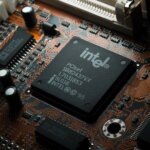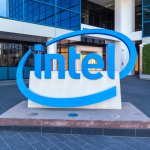Intel teases its upcoming Xeon processors
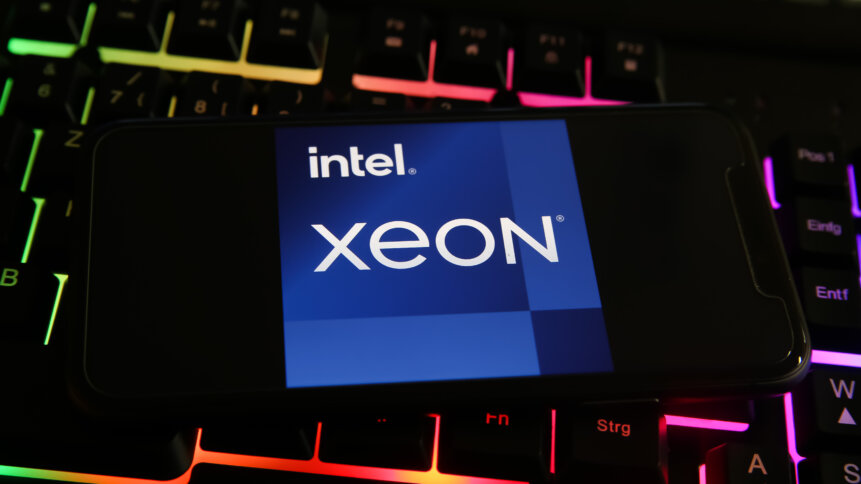
- At the Hot Chips this week, Intel teased the features of its upcoming Xeon processors.
- The Granite Rapids and Sierra Forest Xeon processors are set to launch in 2024.
- The roadmap will please investors after significant delays by Intel.
During its 2022 investor meeting, Intel provided the first view of its new Xeon roadmap extending through 2024. The goal was simple: to cement its leadership in the data center market and pave the way for continued growth. Intel wanted to stay on top of next-generation products across cloud, network, and edge.
After all, repeated failure to keep up with the competition has led to irrevocable market share losses for Intel. In fact, these days, Intel is infamous for its product delays, yet it holds a significant market share of 71% in the PC and server processing chips sector, though that’s significantly down from 90% in 2017.
“Intel remained the market leader with a 71% share, although far from the share it commanded until 2018. Its revenue from the segment dropped 16% YoY in 2022,” Counterpoint Research reported. The report’s analysts attributed the market share decline to delays in Intel’s latest processors and products and weakness in enterprise spending due to macroeconomic conditions.
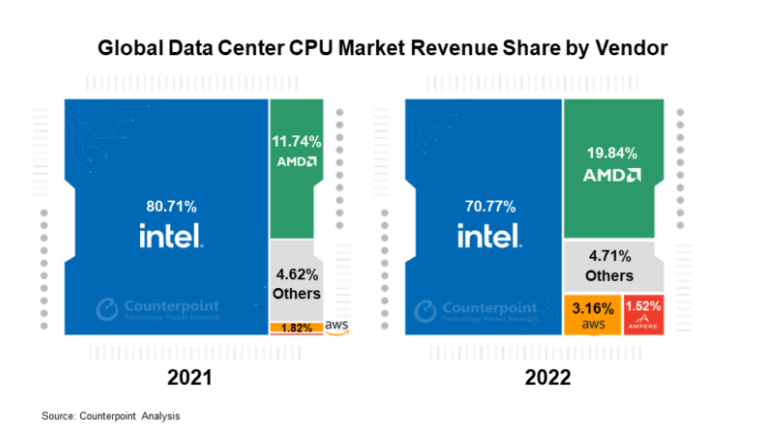
Intel market share loss points to AMD’s rising product portfolio and better performance. Source: Counterpoint Research
For example, after prolonged delays, Intel launched Xeon Sapphire Rapids processors on January 10, 2022. Those next-generation chips were comparable to AMD’s Milan generation, launched in 2021, and therefore, that generational gap between Intel and AMD was a setback for Intel in the coming years.
Counterpoint’s senior research analyst, Akshara Bassi, reckons, “Even though Intel is still the market leader, its market share lost points to AMD’s rising product portfolio and better performance. AMD surpassed Intel in market share growth in 2022. Intel suffered due to continued delays in releasing its next-generation product.”
Adding fuel to the fire, the fourth-generation Xeon processor, Sapphire Rapids, also faced delays, allowing AMD to narrow the gap. However, Sandra Rivera, head of Intel’s Data Center and AI Group, who admitted the company’s recent struggles, affirmed that Intel is now on track, hitting key engineering milestones.
Rivera confirmed that the fifth-generation Xeon processor, Emerald Rapids, will be delivered bythe end of this year. The next-generation Granite Rapids processor is set for a 2024 release, followed by Sierra Forest. Clearwater Forest, another energy-efficient chip, is planned for a 2025 launch.
What does the Intel Xeon roadmap look like?
The roadmap involves a lineup of two categories, P-Core & E-Core. The P-Core products are the standard Xeon products we have seen over the years. On the other hand, the latest E-Core products are Intel’s first energy-efficient architecture lineup, with the company’s first-ever semiconductor for data centers. The Sierra Forest processors were meant to hit the market by the first half 2024.
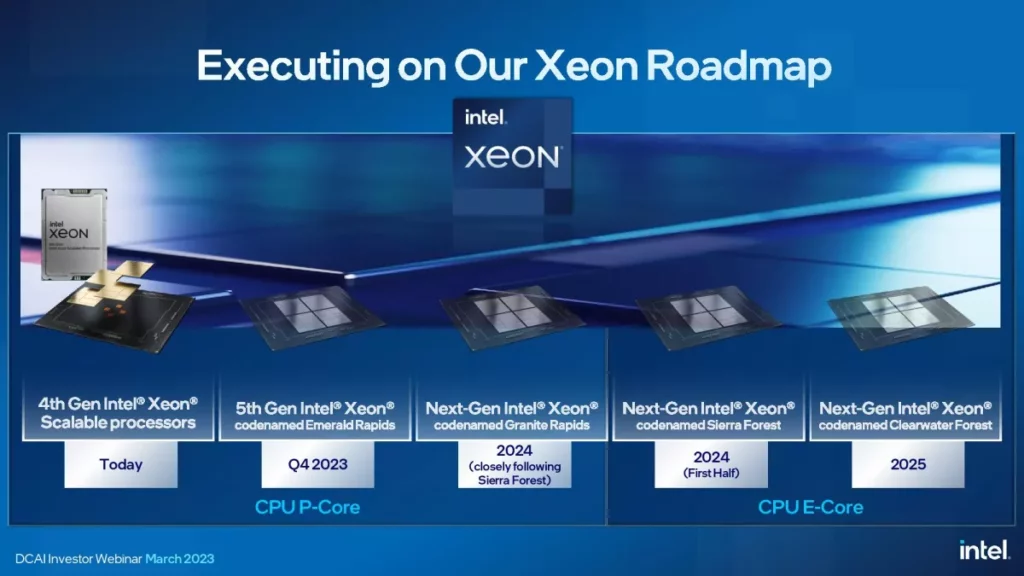
Intel multi year Xeon roadmap to accelerate data center leadership and growth. Source: Intel
In short, Intel added a new ultra-efficient processor family (codenamed Sierra Forest) to its lineup, to fuel the company’s growth across cloud, network, and edge.
Intel teased its latest Xeon processors at Hot Chips 2023
At the annual Hot Chips conference this week, many of the industry’s biggest chip design firms discussed their latest and upcoming products. Intel specifically took the stage to talk about its next generation of Xeon processors, Granite Rapids and Sierra Forest, both set to launch next year.
YOU MIGHT LIKE

Intel launches its first quantum chip
Intel will split its data center chips into two categories: the “Granite Rapids” chip, which will focus on performance but consume more power, and the more efficient “Sierra Forest” chip. Dduring the semiconductor technology conference at Stanford University in Silicon Valley, Intel said its “Sierra Forest” chip will have 240% better performance per watt than its current generation of data center chips.
It was the first time the company had disclosed such figures. The move by Intel is seen as a way to assure the market that the US chip giant is still on track to deliver in early 2024, as promised. Lisa Spelman, Intel corporate vice president and general manager of Xeon Products and Solutions, said, “We recently shipped our millionth 4th Gen Xeon. Our 5th Gen Xeon ( Emerald Rapids) will launch in Q4 2023, and our 2024 portfolio of data center products will prove to be a force in the industry.”
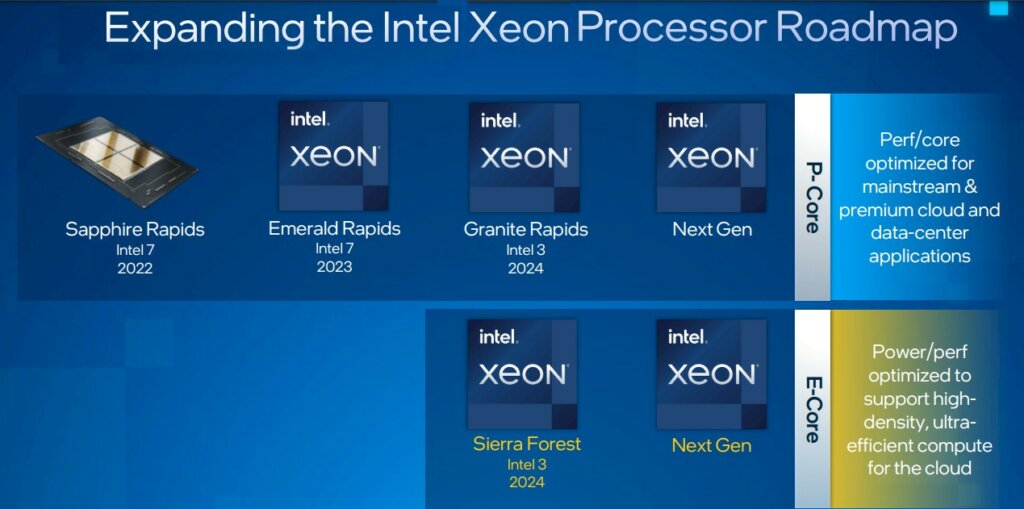
At Intel’s 2022 investor meeting, the company provided the first view of its new Xeon roadmap, extending through 2024. Source: Intel
Based on the technical specifications revealed at Hot Chips, the new Sierra Forest and Granite Rapids processors will utilize modular system-on-chips (SoCs) for increased scalability and flexibility. This will enable products that meet the growing scale, processing, and power efficiency needs for AI, cloud, and enterprise installations.

Intel’s announcement of its Xeon roadmap will placate investors.
The architecture also offers two different socket-compatible processors, allowing for “simplicity and interchangeability for any workload,” Lisa noted. Intel’s E-core processors, Sierra Forest, are designed to deliver density-optimized computing power efficiently, boasting 2.5x better rack density and 2.4x higher performance per watt.
On the other hand, P-core processors, Granite Rapids, are optimized to deliver the lowest total cost of ownership for high-core performance-sensitive workloads. They offer two to three times better performance for mixed AI workloads and come with built-in accelerators for targeted workloads.
After losing market share to AMD and Ampere Computing, a startup founded by ex-Intel executives – the first company to market with a chip focused on handling cloud computing work efficiently – Intel had to prove its point. After Ampere introduced its chip, Intel and AMD followed suit by announcing similar products, with AMD’s offering hitting the market in June.
Will Intel now get its act back on track? Only 2024 will tell, but certainly the market will be encouraged by the release of at least a roadmap for Intel’s new processors to hit the streets.






